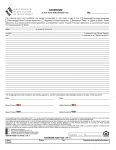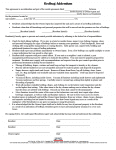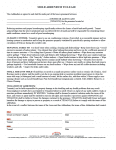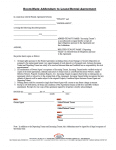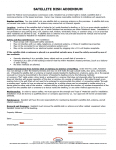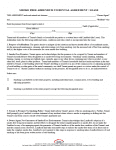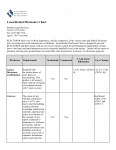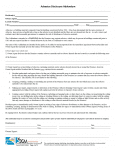California Rental Lease Agreement Templates
California rental lease agreements are written documents used for creating a binding agreement in which a tenant agrees to pay rent in exchange for living or working in a rental property. The contracts are formed between two (2) parties: a landlord (manager of a rental) and the tenant(s) (those living or working in the rental). The forms outline the legal responsibilities of both landlords and tenants and serve to ensure there is little to no confusion over the rent amount, utilities, repairs, contact methods, and much more.
Addendums (9)
Download: PDF
Download: PDF
Download: PDF
Download: PDF
Download: PDF
Download: PDF
Download: PDF
Download: PDF
Download: PDF
Disclosures (3)
Download: PDF
Download: PDF
 Lead-Based Paint Disclosure (CAR Form FLD)
Lead-Based Paint Disclosure (CAR Form FLD)
Download: PDF
What is a California Lease Agreement?
A California Lease Agreement establishes a legal relationship between two parties—a landlord and a tenant—for the leasing of a property, unit, or room. The document is necessary in order to make clear the legal duties and responsibilities expected of each party. It is highly recommended that landlords require tenants to fill out a rental application so that they can screen candidates prior to committing to them.
State Laws & Guides
Laws: Ch. 2 §§ 1940 – 1954 – “Hiring of Real Property”
Guides / Handbooks / Law Updates:
- California Tenants: A Guide to Residential Tenants’ And Landlords’ Rights And Responsibilities.pdf
- CA Realtors’ Quick Guide for 2020.pdf
When is Rent Due?
Under the California Civil Code 1947, rent is “payable at the termination of the holding” as it successively becomes due, whether the holding be “by the day, week, month, quarter, or year.” In other words, rent must be paid by the due date specified in the rental contract (usually at the end of the month). There is no grace period under Californian law.
Increasing Rent (Realtors’ Quick Guide): Starting on January 1st, 2020, landlords have to provide tenants with a minimum of a ninety (90) day notice before increasing rent by ten percent (10%) or more in a twelve (12) month period. For increasing rent by less than ten percent (10%), landlords need to give tenants a minimum of a thirty (30) day notice.
Landlord’s Access
Emergency (§ 1954-1): Landlords are allowed to enter the property in emergency circumstances.
Non-Emergency (§ 1954-2): Entry is allowed by landlords to “make necessary or agreed repairs, decorations, alterations or improvements, supply necessary or agreed services, or exhibit the dwelling unit to prospective or actual purchasers, mortgagees, tenants, workers, or contractors or to make an inspection pursuant to subdivision.” However, entry should take place during normal business hours.
Landlord’s Duties
To remain in accordance with § 1941.1, landlords must ensure the following:
- Rental units are fully waterproofed and protected from the weather. This includes a protected roof, walls, and undamaged/broken windows and doors.
- All plumbing and/or gas equipment conforms to applicable CA law in effect at the time of its installation. It also must be maintained in full working order.
- Tenants’ have access to both hot and cold running water (approved by applicable CA law) that is connected to a disposal system in accordance with state law.
- Heating and electrical systems that are in good working order (and were installed under applicable CA code).
- The rental building, common grounds, and outside areas are kept clean and free of garbage/rubbish.
- Tenants must have access to garbage receptacles and have a means to safely and efficiently dispose of their garbage.
- All floors, stairways, and railings must be maintained and kept in good condition.
- For units that exist in a residential hotel, tenants need to have access to a minimum of one (1) locking mail receptacle
Required Disclosures
- Bed Bug Disclosure (§ 1954.602): Landlords should notify tenants of any known bed bug problems. In line with a new bill introduced in 2017, landlords must provide more extensive information regarding bed bugs.
- Carcinogenic Material: According to California Landlord-Tenant Practice, if a landlord has ten (10) or more employees, they must disclose the existence of known carcinogenic material, such as asbestos, to prospective tenants.
- Death in Unit (§ 1710.2): Landlords must inform tenants if a previous tenant died within the last three years, unless the cause of death was due to AIDS.
- Demolish Plans (§ 1940.6): Landlords seeking to demolish a rental unit must give notice to tenants before accepting any money.
- Flood Hazards (§ AB-646): Tenants must be informed if the property is situated either in a flood hazard area or an area with the potential to flood.
- Lead Paint Disclosure: Federal law requires that landlords of properties built prior to 1978 must disclose known lead paint and hazards to tenants, as well as provide a copy of a government-issued pamphlet on the topic.
- Megan’s Law: Rental agreements must include written notice about the registered sex offenders website, Megan’s Law.
- Mold (§ 26147): Prior to the lease being signed, any mold in the property that affects the dwelling or exceeds permissible exposure limits must be disclosed.
- Ordnances (§ 1940.7): Any former ordnances in the neighborhood of the dwelling must be disclosed by the landlord.
- Pest control (§ 1940.8): If a pest control service has been used, landlords must provide new tenants with a copy of the notice provided by the pest control company.
- Shared Utility Meters (§ 1940.9): A landlord must disclose when utility meters are shared between more than one rental unit before a tenant signs a lease.
Security Deposits
Maximum Amount (§ 1950.5.4): In California, a landlord may not demand or receive security for an amount in excess of two (2) month’s rent for unfurnished properties and equal to three (3) month’s rent for furnished properties, in addition to any rent for the first month paid on or before initial occupancy.
Returning to Tenant (§ 1950.5.5): Any deposits should be returned to tenants within twenty-one (21) days from the time the tenant moved out of the property, with deductions listed in an itemized statement.
Deposit Interest: General CA law does not require landlords to withhold interest for security deposits. However, many of CA’s counties/cities have their own requirements that can be referenced here.
Uses of the Deposit: Landlords can take all or a portion of a tenant’s security deposit for four (4) general reasons:
- Repair damages (not a result of standard wear and tear),
- Replace damaged furniture and other dwelling items caused by the tenant(s) neglect or misuse.
- Cover any unpaid rent, and
- Clean the unit to the level of cleanliness it was when the tenant first moved into the rental.

